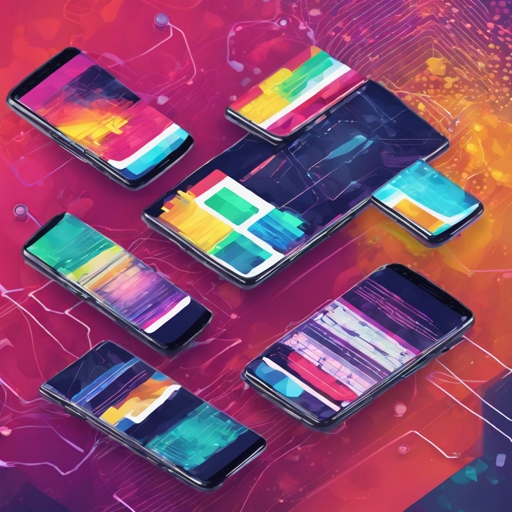Are you ready to elevate your Android app’s image processing capabilities? In this guide, we’re diving deep into the GPUImage library, which brings the power of real-time image processing to your fingertips. With the same vertex and fragment shaders used in its iOS counterpart, GPUImage allows for an easy transition of filters from iOS to Android. Let’s get your project up and running!
Getting Started with GPUImage
To begin your journey into the world of GPUImage, you must meet the following requirements:
- Android 2.2 or higher (OpenGL ES 2.0)
Setting Up Your Project
First things first: you need to add GPUImage as a dependency in your project. Using Gradle, simply include the following code in your build.gradle file:
repositories {
mavenCentral()
}
dependencies {
implementation 'jp.co.cyberagent.android:gpuimage:2.x.x'
}Using GPUImage: Sample Code
Now that you have everything set up, let’s explore how to implement GPUImage in your app. We’ll discuss both preview and non-preview implementations.
With Preview
To provide a live preview of the image effects, follow these snippets:
Java
@Override
public void onCreate(final Bundle savedInstanceState) {
super.onCreate(savedInstanceState);
setContentView(R.layout.activity);
Uri imageUri = ...;
gpuImage = new GPUImage(this);
gpuImage.setGLSurfaceView((GLSurfaceView) findViewById(R.id.surfaceView));
gpuImage.setImage(imageUri); // This should be run in a background thread
gpuImage.setFilter(new GPUImageSepiaFilter());
// Later when we want to save the image
gpuImage.saveToPictures("GPUImage", "ImageWithFilter.jpg", null);
}Kotlin
public override fun onCreate(savedInstanceState: Bundle?) {
super.onCreate(savedInstanceState)
setContentView(R.layout.activity_gallery)
val imageUri: Uri = ...
gpuImage = GPUImage(this)
gpuImage.setGLSurfaceView(findViewById(R.id.surfaceView))
gpuImage.setImage(imageUri) // This should be run in a background thread
gpuImage.setFilter(GPUImageSepiaFilter())
// Later when we want to save the image
gpuImage.saveToPictures("GPUImage", "ImageWithFilter.jpg", null)
} Without Preview
If you choose not to use a preview, here’s how to implement it:
Java
public void onCreate(final Bundle savedInstanceState) {
Uri imageUri = ...;
gpuImage = new GPUImage(context);
gpuImage.setFilter(new GPUImageSobelEdgeDetection());
gpuImage.setImage(imageUri);
gpuImage.saveToPictures("GPUImage", "ImageWithFilter.jpg", null);
}Kotlin
public override fun onCreate(savedInstanceState: Bundle?) {
super.onCreate(savedInstanceState)
setContentView(R.layout.activity_gallery)
val imageUri: Uri = ...
gpuImage = GPUImage(this)
gpuImage.setFilter(GPUImageSepiaFilter())
gpuImage.setImage(imageUri)
gpuImage.saveToPictures("GPUImage", "ImageWithFilter.jpg", null)
}Understanding the Code: An Analogy
Imagine you’re a chef in a kitchen, where your task is to prepare a variety of dishes (image filters). Each dish requires specific ingredients (image data) and cooking techniques (processing methods). In our scenario, the GPUImage class is like your kitchen; it’s equipped with all the necessary tools to create delicious meals.
- setImage: This is where you bring the ingredients into your kitchen—you’re preparing them for cooking.
- setFilter: Here, you’re deciding what type of dish to prepare. Different filters serve different purposes just like recipes.
- saveToPictures: Finally, after your dish is cooked, it’s time to present your meal. This saves the processed image, much like serving a beautiful plate of food to your guests.
Troubleshooting
If you encounter issues while implementing GPUImage, consider the following troubleshooting ideas:
- Ensure that your project is set to use OpenGL ES 2.0.
- Check if the image URI is valid and accessible.
- Make sure you are running image loading operations on a background thread to avoid UI thread blocking.
For more insights, updates, or to collaborate on AI development projects, stay connected with fxis.ai.
Conclusion
At fxis.ai, we believe that such advancements are crucial for the future of AI, as they enable more comprehensive and effective solutions. Our team is continually exploring new methodologies to push the envelope in artificial intelligence, ensuring that our clients benefit from the latest technological innovations.

